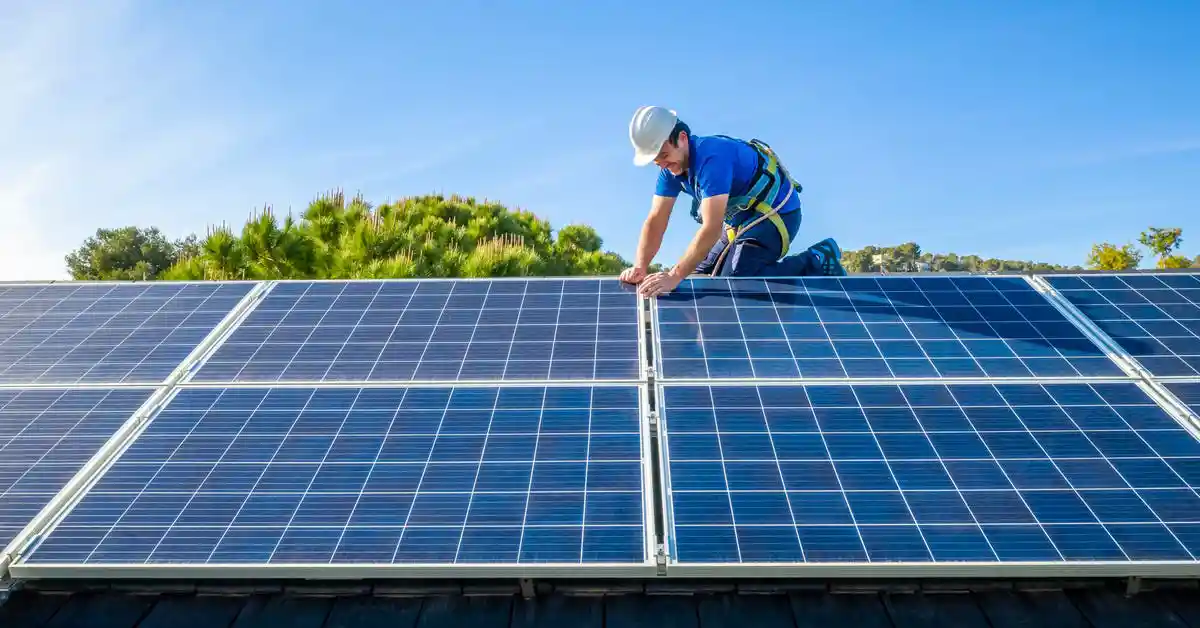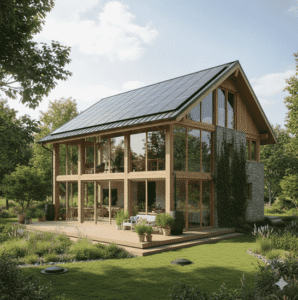Introduction: The Renewables Energy Shift
Solar energy is no longer a futuristic idea, it’s now one of the most practical and profitable investments for homeowners. In 2025, solar panels, home batteries, and renewable energy systems are helping families cut utility bills, improve resilience during outages, and even qualify for insurance discounts.
With federal tax credits, state incentives, and dropping technology costs, renewable energy has become more accessible than ever. But it’s not just about savings, renewables also play a role in home insurance coverage, warranties, and property value.
What Are Solar & Renewable Home Systems? (Quick Answer)
Solar and renewable home systems refer to energy solutions like solar panels, wind turbines, and home battery storage that reduce reliance on traditional utilities by generating clean, sustainable power.
The most common systems for homeowners in 2025 are:
- Solar panels (PV systems): Roof- or ground-mounted arrays.
- Home battery storage: Stores energy for night use or outages.
- Solar water heaters: Heat water using solar energy.
- Small-scale wind turbines: For properties with sufficient wind flow.
Why Solar & Renewables Matter in 2025
- Rising utility costs: The average U.S. household spends over $2,200 annually on electricity.
- Tax credits: Federal programs cover up to 30% of solar installation costs.
- Resilience: Home battery storage provides backup power during blackouts.
- Environmental impact: Reduces carbon footprint and reliance on fossil fuels.
- Insurance benefits: Storm- and fire-rated solar setups can qualify for premium discounts.
- Resale value: Solar-equipped homes sell for 4–6% more on average.
Average Costs & Savings for Solar in 2025
| System | Average Cost (2025) | Annual Savings | ROI Timeline | Insurance Impact |
| Solar PV System (6kW) | $14,000–$22,000 | $1,200–$1,800 | 7–10 years | May increase replacement cost but adds discounts |
| Home Battery (10–15 kWh) | $8,000–$12,000 | $300–$500 | 10–12 years | Covered as equipment |
| Solar Water Heater | $3,000–$6,000 | $300–$500 | 5–7 years | Minimal |
| Small Wind Turbine (Residential) | $10,000–$20,000 | $500–$1,000 | 10–15 years | Covered, but regional limits apply |
Insurance & Coverage Considerations
- Dwelling Coverage
- Solar panels are typically covered under the dwelling portion of homeowners insurance.
- If mounted on ground arrays, they may fall under “other structures” coverage.
- Premium Adjustments
- Panels increase home replacement cost, possibly raising premiums.
- However, insurers may discount if panels are hurricane-rated, fire-resistant, or professionally installed.
- Warranty Protection
- Most solar panels have 25–30 year performance warranties.
- Batteries and inverters often carry 10-year warranties.
- Claim Scenarios
- Covered: Storm damage, fire, vandalism.
- Not Covered: Manufacturer defects (warranty issue), normal wear/tear, off-grid DIY systems without permits.
Installation & Contractor Insights
- Professional installation is essential. DIY systems may not qualify for insurance coverage or rebates.
- Permits & inspections: Required in most jurisdictions, especially in storm-prone regions.
- Roof integrity: Roof must be inspected before panel installation to avoid future leaks.
- Battery placement: Indoor garages or climate-controlled areas extend battery life.
Solar Incentives in 2025
- Federal Investment Tax Credit (ITC): 30% off solar installation costs.
- State rebates: Vary but can reduce upfront costs by 10–20%.
- Net metering: Sell excess electricity back to the grid in eligible states.
- Green financing programs: Low-interest loans for renewable energy upgrades.
Real-World Examples
- Texas Solar Upgrade: A homeowner installed a $20,000 solar + battery system. After incentives, net cost was $14,000. Savings: $1,600 annually + insurance discount for storm-rated panels.
- California Net-Zero Home: Combining solar panels, EV charging, and efficient appliances, the family achieved a net $0 utility bill for the year.
- Florida Resilience Case: Impact-rated solar panels helped a family maintain power during a hurricane, while neighbors lost electricity for days.
Challenges of Solar & Renewables
- High upfront costs: Even with incentives, installation requires major investment.
- Insurance complexity: Coverage varies by provider, especially for batteries.
- Maintenance: Panels require occasional cleaning and inspections.
- Regional limitations: Wind turbines and solar efficiency depend on location.
- Technology learning curve: Batteries and inverters require proper monitoring.
Tips for Homeowners in 2025
- Always use licensed contractors to ensure warranty and insurance compliance.
- Combine solar panels with battery storage for blackout protection.
- Check with your insurer before installation to update coverage.
- Leverage federal/state incentives to lower upfront costs.
- Schedule installation in off-peak seasons for better pricing.
Key Takeaways
- Solar & renewables reduce reliance on traditional utilities and cut bills by $1,200–$1,800 annually.
- Costs range from $3,000 to $22,000, but incentives and savings improve ROI.
- Insurance covers panels but may require riders or higher dwelling limits.
- Professional installation is critical for coverage and warranty protection.
- Solar-equipped homes gain resale value and long-term sustainability.




